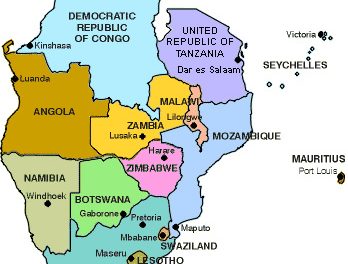
Green Scheme projects: – Re-evaluation for best possible modalities

By Josef Kefas Sheehama.
A Namibian Agriculture Policy should be the overarching policy that serves as a base for aligning all other existing policies, laws, and regulations. Such a policy should present a framework for the design of programmes and projects that will steer the performance of the sector.
The Namibia Merchandise Trade Statistics Bulletin reveals that Namibia imported N$340.8 million worth of rice from June 2022 to June 2023. The trade imports are highlighting the market gaps that exist as the country progresses in producing its food, given the food insecurity faced by various communities. The green scheme programme encourages the development of irrigated production with approximately 27,000 hectares along the perennial rivers bordering Namibia and at strategic inland areas where water is abundant. Namibia has about eleven green scheme projects such as the Orange River, Hardap, Etunda, Musese, Sikondo, Uvungu-Vungu, Ndonga-Linena, Mashare, Shadikongoro, Kalimbeza, and Shitemo green scheme farms. The Zambezi and the two Kavango regions are by far the best options as hubs for food production. This whole dependence on South Africa and other countries for everything, especially food is going to cost us a lot.
The 11 green schemes are underfunded, leading to the projects screeching to a halt. The AgriBusDev, a custodian of the government green scheme under the agriculture ministry is mandated to keep these projects sustainable and economically competitive. Therefore, the achievement of agricultural prosperity on which the nation depends is not the responsibility of the government alone. Without the cooperation and participation of the farming community and the private sector as a whole, the government’s agricultural development objectives cannot be achieved.
Irrigation is vital for a successful green revolution to achieve sustainable development goals in food security, socio-economic and rural development. However, irrigation in Namibia has not achieved the set goals despite the huge investments involved. The level of investment and abundant water resources ought to have expedited the goals of food self-sufficiency and socio-economic development.
Therefore, the Ministry of Agriculture, Water, and Land Reform has undertaken to review the Green Schemes which showed that the major persistent issues that are hindering the scheme to achieve their goals are inconsistent policies, lack of political commitment, low awareness and lack of technical know-how among the management, and untimely financial intervention. The lack of full time involvement by the top leaders who are responsible for these green schemes has cost the government. The green schemes were underutilized and led to the abandonment of large-scale irrigation systems.
Hence, to achieve food security and socio-economic development through the Green Schemes, there is need to provide a proper policy framework, appropriate technology, and farmers’ awareness and their inclusion in the decision-making process. The schemes are dormant as they face the multiple challenges of poor management, lack of socio coordination, market problems and poor technical skill and knowledge of irrigation practices at operational level.
Despite these problems and challenges, there is ample opportunity to make the system sustainable to create job and help improve the economic status of the people in the agriculture sector.
The Kalimbeza Rice Project in the Zambezi Region, for instance, remains dormant due to a lack of funds. The project was bailed out in 2020 when the agriculture ministry spent N$7.1 million to keep it running. Various publications revealed that AGIBUSDEV allegedly failed to manage the project, forcing the government to take over the Green Scheme that was supposed to have happened before the end of 2022. Before operations ceased, three varieties were produced: – Supa, Irga and Angola. Today, the 229 ha fertile land in the Kabbe North district is deserted.
Therefore, all attempts to re-evaluate the Green Schemes should focus on how to get all the schemes productive again. Generally, the government is now aware of the significant role of irrigation development and its importance for food security and economic growth.
Moreover, as is widely accepted, if Namibia wants to resuscitate the Green Schemes, it will need to learn from other countries such as China, the United States, and India. In Africa we can learn from Sierra Leone, Ethiopia, and South Africa amongst others. The Ministry of Agriculture, Water, and Land Reform should recognize the importance of flexibility in the timing and design of reform processes to achieve practical and effective policy changes.
The government should prepare future reforms via continued research, education, and governance efforts, to help take advantage of reform opportunities when the timing is right. Additionally, there is light at the end of the tunnel as the Namibia Training Authority encouraged the National Policy on Work-integrated Learning for Technical and Vocational Education and Training (TVET). In order to meet this challenge, the agricultural sector in Namibia needs serious reforms and an increase in public investments in agriculture. To reach these goals the development of skills and knowledge plays a key important cross-cutting and value-adding strategy.
It appears that monitoring and evaluation are having far less impact on the management process than expected or even possible. One of the main reasons for this sad state of affairs is that monitoring and evaluation are being imposed from senior managers who are based in Windhoek to the farm managers.
In conclusion, it requires a great deal of courage to stay the course in the face of setbacks and to make decisions that may be unpopular with short-term-oriented stakeholders. Effective partnerships between the government and private sector in critical areas of infrastructure and long-term investments would expedite development. Faced with this difficult task, the easy option for policymakers would be to maintain the status quo. But better policies for Green Schemes hold tremendous promise for meeting the challenge of food security and nutrition, livelihoods, and environmental sustainability.












































